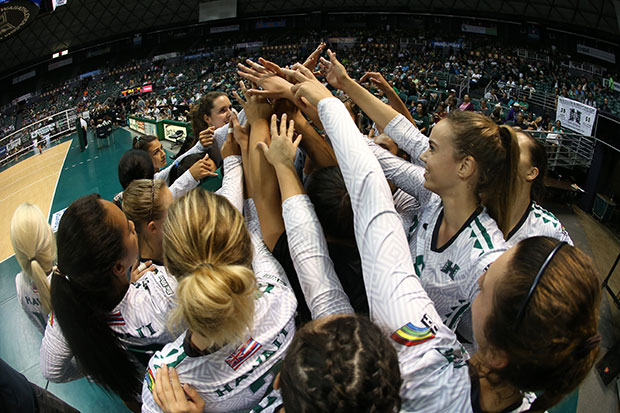
—This editorial by UH Mānoa Assistant Athletics Director and Senior Woman Administrator Marilyn Moniz-Kahoʻohanohano and AAUW Honolulu branch’s Janet Morse was originally published in the March 2, 2017 edition of the Honolulu Star Advertiser.

Talk to any educator, or anyone involved in education, and it’s a sure bet they’ve heard of Title IX. It’s a sweeping regulation that requires any school that takes federal funds to put programs in place that provide equal opportunity and prohibit sex discrimination. With few exceptions, this law affects K–12 education, colleges and universities, for-profit schools, career and technical education agencies, libraries and museums.
In fact, the law has a connection to Hawaiʻi—it was named the Patsy Mink Equal Opportunity in Education Act in 2002, to honor the late U.S. representative, who was a sponsor of the bill.
This law affects all aspects of academia, but the most visible effect Title IX has is on college athletics. Under the law, all learning institutions are required to offer equal athletic opportunities. While this hardly seems revolutionary today, keep in mind that when the law was passed in 1972, there were about 30,000 female college athletes according to AAUW (American Association of University Women). Today there are more than 150,000.
This increase in female participation in sports doesn’t just mean more women are on the field. It also opens more educational opportunities to women in the form of scholarships. The inclusion of more women means greater diversity because of more athletic scholarships. In the same way athletic scholarships for men diversifies schools in racial, socio-economic and gender representation by making college a reality for those who would not otherwise consider it, Title IX allows college to be an option for women athletes who may have been hesitant to consider higher education.
This means that those women graduate with better jobs and better earning potential. The increased efforts to recruit, retain and graduate female college athletes means that families will be able to increase their socio-economic status and better contribute to society as a whole.
In addition, a line can be drawn from Title IX’s passage in the early ’70s to the long-time dominance of the University of Hawaiʻi at Mānoa’s women’s volleyball team. Without the law, the resources to develop, grow and support the four-time champions may not have been provided and the pride UH Mānoa, and the state, has for the program would not exist.
The recent appointment of Robyn Ah Mow-Santos, a former player, as the new head coach of the Wahine volleyball team is proof that Title IX works. But today, only 43 percent of women’s collegiate teams are coached by females. We should be concerned with this statistic and the decline of the number of women coaches.
- Related UH News story: Shoji announces retirement; Ah Mow-Santos named new women’s volleyball coach, February 21, 2017
In addition, parity among female college athletes has yet to be reached. Women made up 53 percent of the total undergraduate population in the U.S. in the 2010–2011 academic year—but they made up only 40 percent of the undergraduate athletes. Women’s collegiate sports programs also suffer from less funding, fewer scholarships and recruiting isn’t a priority compared to male sports programs.
Women’s parity in the workplace and academics as well as equality in pay and athletics is good for us all.
2017 marks the 45th anniversary of Title IX and UH Rainbow Wahine Athletics, which is no coincidence. It is a momentous occasion, which will be celebrated at a dinner on May 2. All current Rainbow Wahine student-athletes will be celebrated along with the recognition of past influential Rainbow Wahine supporters and alumnae. Most importantly, this dinner will remember the Title IX coauthor, Patsy T. Mink, and Dr. Donnis Thompson, Title IX pioneer and athletics director who started the Rainbow Wahine program in 1972.
Proud tradition, bright future. Let’s go ’Bows!

